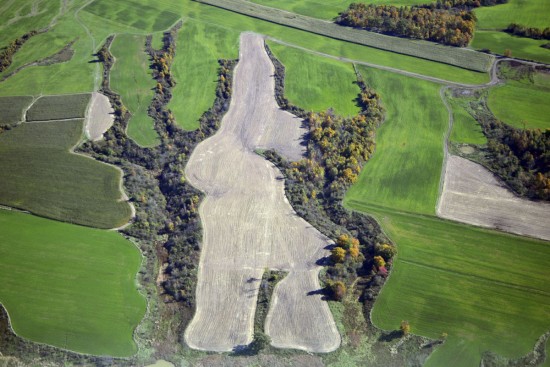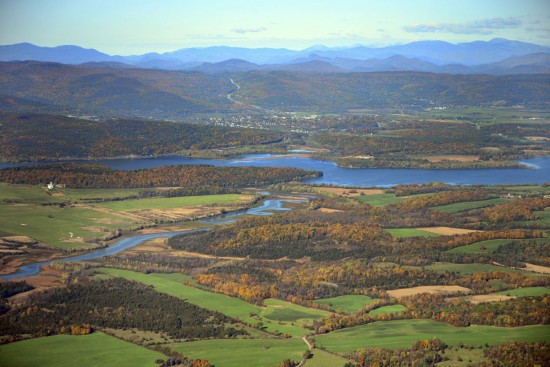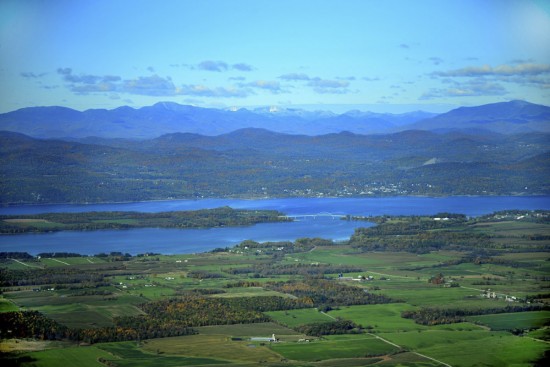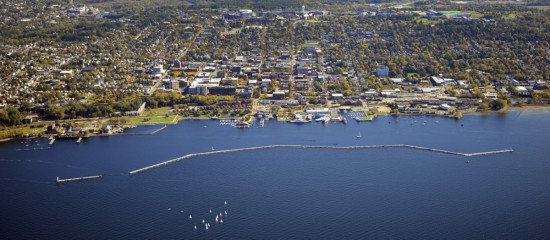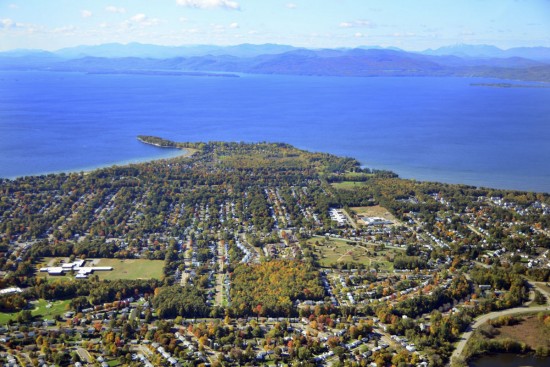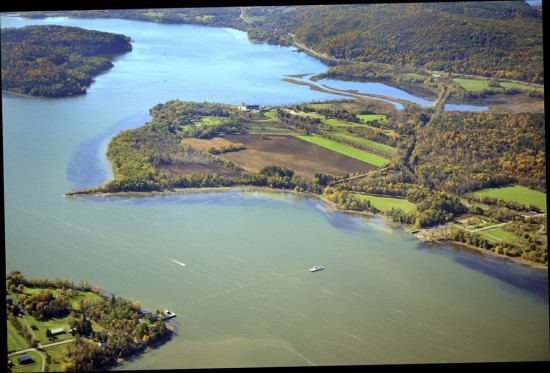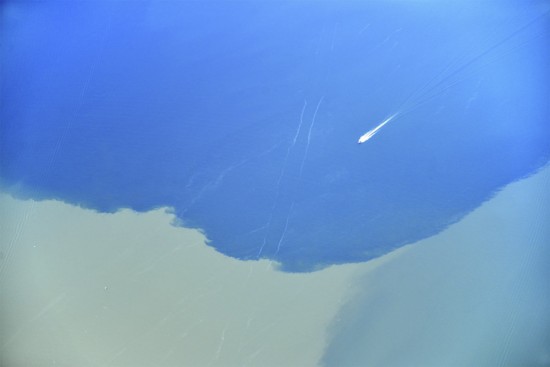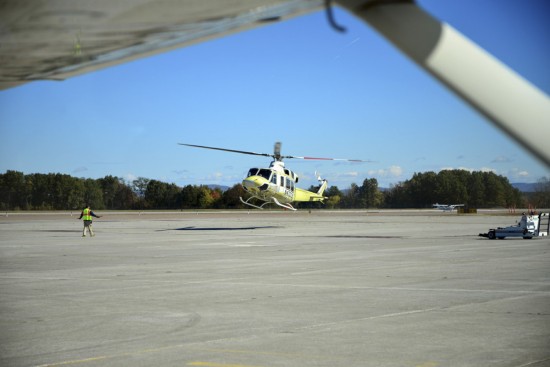Today’s guest post on aerial photography is by Matt McCarthy (more aerial photos can be found on flickr):
We may not all get the chance (or want the chance) to shoot from a small plane someday, but if the opportunity ever presents itself, it will probably be over before you know it and there will be a lot of things you wish you’d thought of while you were up there. Here are a few tips that apply to a typical high-wing Cessna (click on image for larger view):
The best viewing is actually from the back seat. The front has a deep dashboard, a lot of cowl to look over, and a lot of open sky in front of you. It’s also very cramped up there and you won’t be able to see much out the pilot’s side. The back affords views on both sides and the fuselage is a little narrower so you can move to either side with little effort (I have no comment about the seat belt.) I’ve found an altitude of no more than 2500ft above ground level (AGL) works well on a clear day. Lower is often better, but not always an option. Haze and a lack of subject/composition become issues at higher altitudes.
One factor that you might not be anticipating is speed. You don’t get much sense of speed in the air, and things do seem to move along somewhat slowly, but you are definitely moving at a pretty good clip and your viewpoint changes suprisingly fast. When you see a pleasing alignment of foreground, mid-field, and background elements… shoot! The foreground barn on your left will soon be on your right… and now it’s gone out of frame! You really need to be on your toes. You just can’t circle back for everything.
Most planes are not equipped with a photography window port. The reality is that you’ll be shooting through a window for 99% of your shots. It is possible to open a window during flight (preferedly at speeds below 100kts.) and the blast of wind is not actually as bad as you might expect – though it does get cold. The main issue is that it requires pre-planning and coordination with the pilot. Hinged windows are only found in front doors, so you’ll need to lean forward to get the clear view. You’ll also need to remove your headset because your mic will pick up constant wind noise and render radio communication useless. Even with your mic essentially turned off, the wind noise in the cockpit will make it harder to hear the radio. Open window shots have to be very deliberate and applied sparingly. You also need to keep your lens inside somewhat because you’ll never be able to hold it perfectly steady stuck out in a 90kt breeze.
In fact, you can almost never hold your camera perfectly steady in a small plane. Some amount of turbulance is to be expected, so I shoot with shutter priority at 1/1000 or faster. It’s not that you’re constantly getting knocked around up there, but… it’s a little like trying to shoot while you sit on a basketball. When you need to shoot at slower shutter speeds, you’ll need a LOT of patience.
As usual for through-the-window shots, you want to keep the lens as parallel to the window as you can, not just to help reduce optical distortion, but to reduce color shift in backgrounds. You can’t set your lens right against the window because it will pick up vibration and also skate all over the place as you try to “sit on the basketball.” Cup your hand around the end of the lens and use it as a shock-absorbing hood. Most pilots are just looking for a chance to make a maneuver, so they are very willing to put the plane into a nice bank to help you get the angle you need to shoot and still remain parallel to the window. Everybody wins (except you, trying to shoot through the window like that. You should be shooting from a helicopter and using a gyroscopic head).
But beyond any of this, get the shot! Who knows when you’ll be up here again?
All of these shots were taken through the window and most have had contrast or levels adjustment.
If you have an interesting idea for a guest post, you can contact me here.
